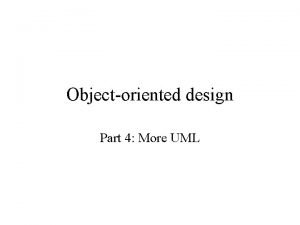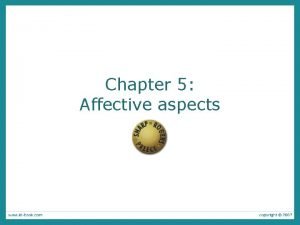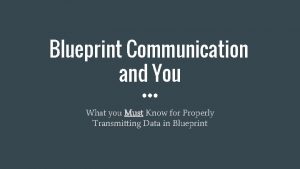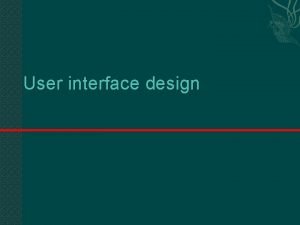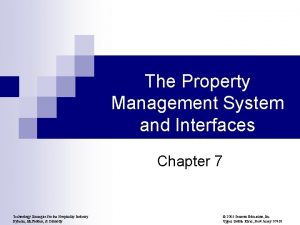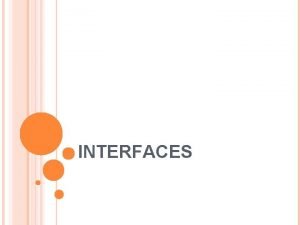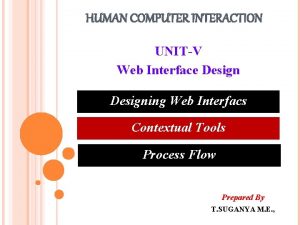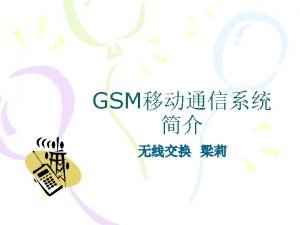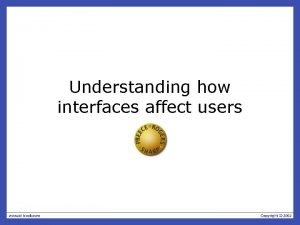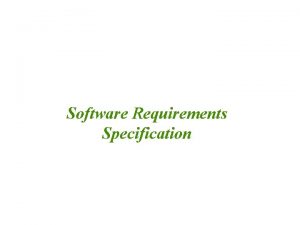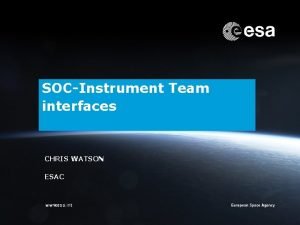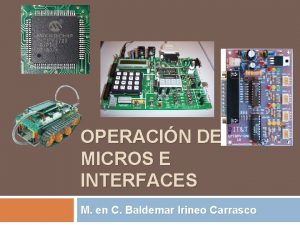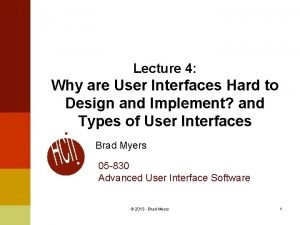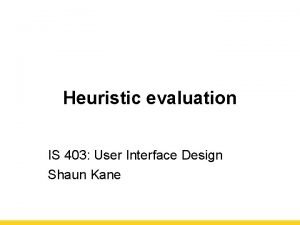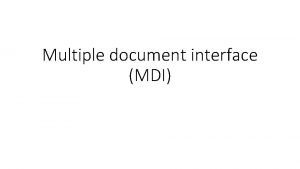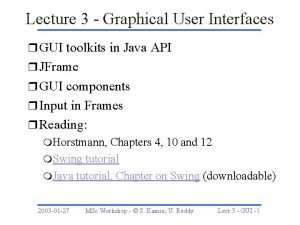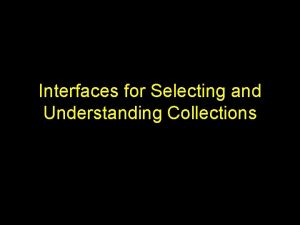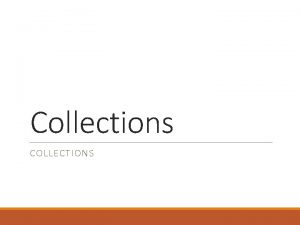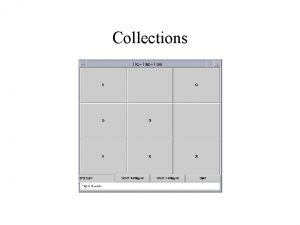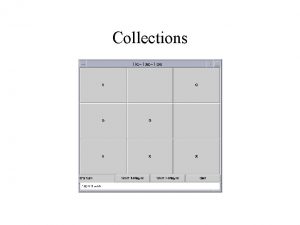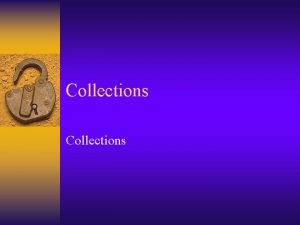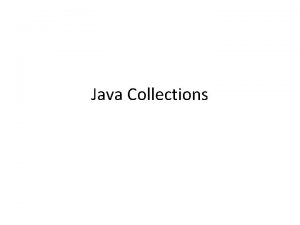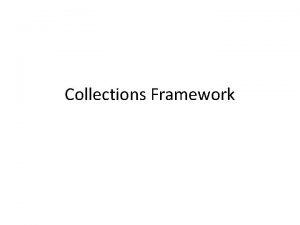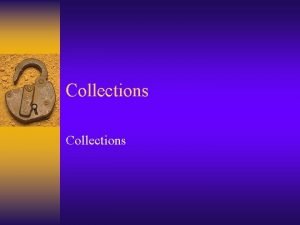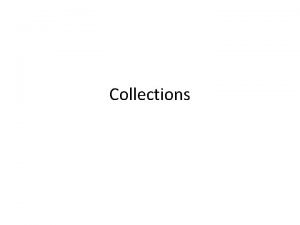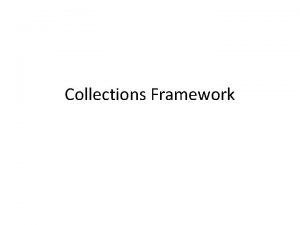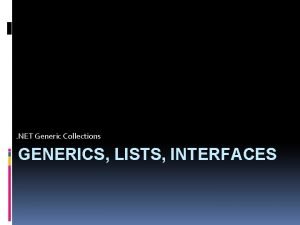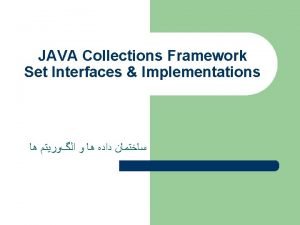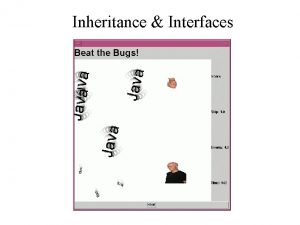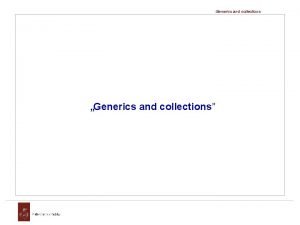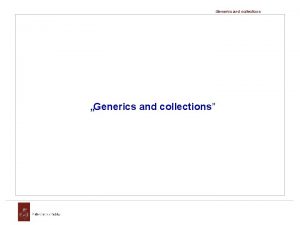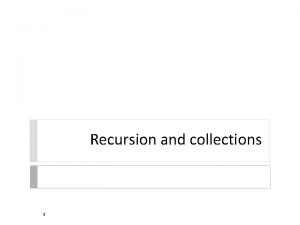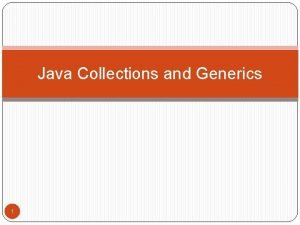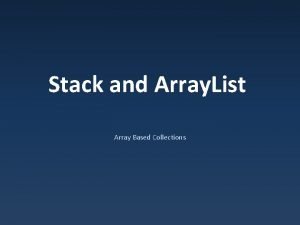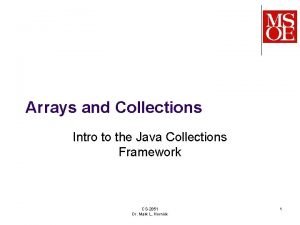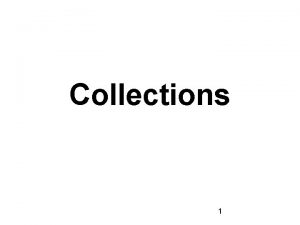Interfaces for Selecting and Understanding Collections Selecting from

























- Slides: 25

Interfaces for Selecting and Understanding Collections

Selecting from Collections are sets of documents that have been coalesced by a human or system. Traditional collections: – NLM’s Med. Line – ACM Digital Library – LEXIS-NEXIS – Library/museum resources from a particular donor How do people with information needs locate and identify the appropriate collections?

Does it Matter? Web search engines (e. g. Google) get us the information we need … – well maybe Web search drops users into the middle of a collection without any understanding of the collection and its overall characteristics. Web search misses – Lots of more structured materials • “the hidden web” – Subscription-based content • Which is likely the best edited, most accurate, and most valuable in specialized domains

Interfaces over Multiple Collections Interfaces for Selecting and Understanding Collections – Lists – Overviews – Examples – Automated source selection

Lists of Collections Usually just provides a list of collection names. – Difficult to select from if user does not know the collections beforehand – Over time people bookmark collections of value Need tools for helping users who are outside of their areas of expertise

Example

Example

Examples

Overviews of Collections Overviews provide a sense of what is in a collection Overviews can be – Based on a category or directory structure – Automatically derived from the collection Presentation of an overview is often a form of information visualization

Category-based Overviews Med. Line – biomedical collection – Medical Subject Headings (Me. SH) consists of 18, 000 categories in a directed acyclic graph ACM Digital Library – computer science collection – Hierarchy of 1200 catgory (keyword) labels Yahoo – the Web – Graph of directories (probably a DAG) Humans have to place documents in categories – Author for ACM DL, subject experts for Med. Line, surfers for Yahoo

Me. SH Browser

Hi. Browser

Cone. Trees

Radial Views

Hyperbolic Views

Media. Metro

Automatically Derived Overviews Apply clustering algorithms to document collection – Remember Automatic Global Analysis • Use of co-occurrance and co-citation • Use of distance-based clustering approaches like hierarchic agglomerative clustering Need methods to determine labels for clusters – Could be a document • identification of centroid (document most similar to all others) • Identification of hubs (document most mentioned by cluster) – Could be one or more terms • Use most common / best differentiator (using TF-IDF) No human intervention required – but people are likely to be valuable as editors

Scatter Gather

Evaluation of Scatter-Gather – Scatter-Gather conveyed overview of collection contents – Scatter-Gather without search was less effective than a basic search – Need to combine clustering with search

Themescapes

More Themescapes

Kohonen Maps

Evaluation of Graphical Overviews One study found that non-experts found the clustering results difficult to use (worse than text -based views like Scatter-Gather) Comparison of Kohonen map and Yahoo – 11 of 15 subjects found “interesting” page using Kohonen • 8 were able to find same page using Yahoo – 14 of 16 subjects found “interesting” page using Yahoo • 2 were able to find same page using Kohonen – Subjects liked ability to jump between categories without backing out of current category Unsupervised thematic overviews probably better for giving a gist of what is in a collection than for search.

Examples, Dialogs, Wizards Retrieval by reformulation – Start with example queries • Rabbit, Helgon – Can be difficult to find appropriate starting query Wizards – Found to be helpful for users without necessary domain knowledge get through many step processes – Not helpful when wizard not accompanied with help – Not useful when goal is teaching how to use the interface. Guided tours – Presents a logical sequence of navigation choices for accomplishing a goal (e. g. Waldens Paths) – Not evaluated with regards to information access

Automated Source Selection Selecting collection automatically (but explicitly) Need a model of each collection – What it covers, need model of topics – What it is good at, need metric for good Develop a model of the user’s information need Match the information need to the most valuable collections for that topic Used in meta-search – interesting area of research Could be starting point for interactive collection selection.
 Selecting text means
Selecting text means What is difference between abstract class and interface
What is difference between abstract class and interface Difference between abstract class and interface
Difference between abstract class and interface Dialogues
Dialogues Gui events
Gui events Colloids and interfaces
Colloids and interfaces Expressive interfaces
Expressive interfaces![[web user interface] [web user interface]](data:image/svg+xml,%3Csvg%20xmlns=%22http://www.w3.org/2000/svg%22%20viewBox=%220%200%20200%20200%22%3E%3C/svg%3E) [web user interface]
[web user interface] Uml interfaces are used to:
Uml interfaces are used to: Office interface vs industrial interface
Office interface vs industrial interface What are expressive interfaces?
What are expressive interfaces? Blueprint interfaces
Blueprint interfaces Which is not an objective of designing interfaces?
Which is not an objective of designing interfaces? Property management system interfaces
Property management system interfaces Interfaces are syntactically similar to
Interfaces are syntactically similar to Ims platform
Ims platform Interactive single-page process is a type of
Interactive single-page process is a type of Bts
Bts Expressive interfaces
Expressive interfaces Characteristics of bad srs document
Characteristics of bad srs document Team interfaces
Team interfaces Micros e interfaces
Micros e interfaces Why are user interfaces hard to implement
Why are user interfaces hard to implement Gulf of execution and evaluation
Gulf of execution and evaluation Sdi and mdi
Sdi and mdi Gui for r
Gui for r
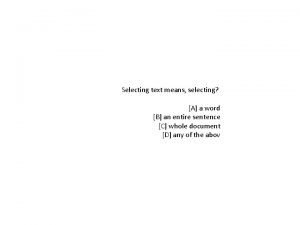
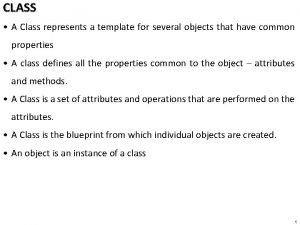


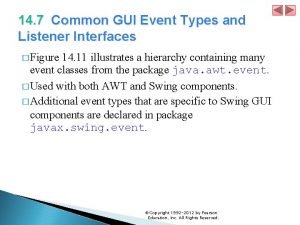

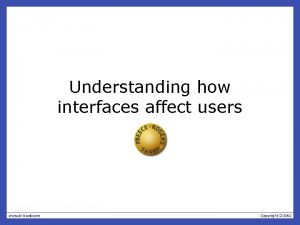
![[web user interface] [web user interface]](https://slidetodoc.com/wp-content/uploads/2020/12/3515569_e80293ca9d02734a3126f3e8d1d1c3b7-300x225.jpg)
